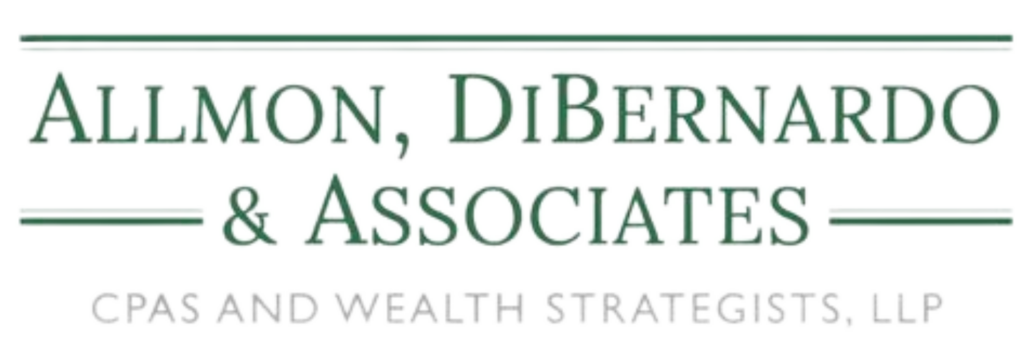Blog
Allmon, DiBernardo & Associates shares expert advice on tax, wealth, and financial strategy.
Allmon, DiBernardo & Associates shares expert advice on tax, wealth, and financial strategy.
 https://www.mbamdcpas.com/wp-content/uploads/2025/10/Year-End-Exit-Planning-Checklist.jpg
1250
2000
Abstrakt Marketing
/wp-content/uploads/2024/09/Allmon_Logo-1-1030x360.png
Abstrakt Marketing2025-10-17 08:13:302025-12-13 08:00:39Exit Planning Checklist: What Every Business Owner Should Address Before Year-End
https://www.mbamdcpas.com/wp-content/uploads/2025/10/Year-End-Exit-Planning-Checklist.jpg
1250
2000
Abstrakt Marketing
/wp-content/uploads/2024/09/Allmon_Logo-1-1030x360.png
Abstrakt Marketing2025-10-17 08:13:302025-12-13 08:00:39Exit Planning Checklist: What Every Business Owner Should Address Before Year-End https://www.mbamdcpas.com/wp-content/uploads/2025/10/Budgeting-for-Profit_-Why-Most-Small-Business-Budgets-Dont-Work.jpg
1250
2000
Abstrakt Marketing
/wp-content/uploads/2024/09/Allmon_Logo-1-1030x360.png
Abstrakt Marketing2025-10-17 07:26:552025-12-13 08:00:39How To Plan for Profit When Building a Budget for a Small Business
https://www.mbamdcpas.com/wp-content/uploads/2025/10/Budgeting-for-Profit_-Why-Most-Small-Business-Budgets-Dont-Work.jpg
1250
2000
Abstrakt Marketing
/wp-content/uploads/2024/09/Allmon_Logo-1-1030x360.png
Abstrakt Marketing2025-10-17 07:26:552025-12-13 08:00:39How To Plan for Profit When Building a Budget for a Small Business  https://www.mbamdcpas.com/wp-content/uploads/2025/09/Paperwork-laptop-and-business-people-in-office-with-discussion.jpg
1250
2000
Abstrakt Marketing
/wp-content/uploads/2024/09/Allmon_Logo-1-1030x360.png
Abstrakt Marketing2025-09-24 09:12:422025-12-13 08:00:40Partnership Tax Planning: What Business Owners Need to Know When Adding a Partner
https://www.mbamdcpas.com/wp-content/uploads/2025/09/Paperwork-laptop-and-business-people-in-office-with-discussion.jpg
1250
2000
Abstrakt Marketing
/wp-content/uploads/2024/09/Allmon_Logo-1-1030x360.png
Abstrakt Marketing2025-09-24 09:12:422025-12-13 08:00:40Partnership Tax Planning: What Business Owners Need to Know When Adding a Partner https://www.mbamdcpas.com/wp-content/uploads/2025/09/Business-Advisory-vs.-Tax-Compliance-Why-Growing-Firms-Cant-Afford-to-Choose-Just-One.jpg
1250
2000
Abstrakt Marketing
/wp-content/uploads/2024/09/Allmon_Logo-1-1030x360.png
Abstrakt Marketing2025-09-19 08:38:562025-12-13 08:00:40Business Advisory vs. Tax Compliance: Why Growing Firms Can’t Afford to Choose Just One
https://www.mbamdcpas.com/wp-content/uploads/2025/09/Business-Advisory-vs.-Tax-Compliance-Why-Growing-Firms-Cant-Afford-to-Choose-Just-One.jpg
1250
2000
Abstrakt Marketing
/wp-content/uploads/2024/09/Allmon_Logo-1-1030x360.png
Abstrakt Marketing2025-09-19 08:38:562025-12-13 08:00:40Business Advisory vs. Tax Compliance: Why Growing Firms Can’t Afford to Choose Just One https://www.mbamdcpas.com/wp-content/uploads/2025/08/Is-Your-Business-Entity-Structured-for-Tax-Efficiency-Why-A-Year-End-Review-Could-Save-You-Thousands.jpg
1250
2000
Abstrakt Marketing
/wp-content/uploads/2024/09/Allmon_Logo-1-1030x360.png
Abstrakt Marketing2025-08-25 08:29:582025-12-13 08:00:40Is Your Business Entity Structured for Tax Efficiency? Why A Year-End Review Could Save You Thousands
https://www.mbamdcpas.com/wp-content/uploads/2025/08/Is-Your-Business-Entity-Structured-for-Tax-Efficiency-Why-A-Year-End-Review-Could-Save-You-Thousands.jpg
1250
2000
Abstrakt Marketing
/wp-content/uploads/2024/09/Allmon_Logo-1-1030x360.png
Abstrakt Marketing2025-08-25 08:29:582025-12-13 08:00:40Is Your Business Entity Structured for Tax Efficiency? Why A Year-End Review Could Save You Thousands https://www.mbamdcpas.com/wp-content/uploads/2025/08/How-to-Set-Financial-KPIs-for-a-Business-Looking-to-Grow.jpg
1250
2000
Abstrakt Marketing
/wp-content/uploads/2024/09/Allmon_Logo-1-1030x360.png
Abstrakt Marketing2025-08-25 08:23:262025-12-13 08:00:40How to Set Financial KPIs for a Business Looking to Grow
https://www.mbamdcpas.com/wp-content/uploads/2025/08/How-to-Set-Financial-KPIs-for-a-Business-Looking-to-Grow.jpg
1250
2000
Abstrakt Marketing
/wp-content/uploads/2024/09/Allmon_Logo-1-1030x360.png
Abstrakt Marketing2025-08-25 08:23:262025-12-13 08:00:40How to Set Financial KPIs for a Business Looking to Grow https://www.mbamdcpas.com/wp-content/uploads/2025/08/Salary-vs.-Distributions-Comparing-Strategies-for-Paying-Yourself-as-a-Business-Owner.jpg
1250
2000
Abstrakt Marketing
/wp-content/uploads/2024/09/Allmon_Logo-1-1030x360.png
Abstrakt Marketing2025-08-25 07:21:512025-12-13 08:00:40Salary vs. Distributions: Comparing Strategies for Paying Yourself as a Business Owner
https://www.mbamdcpas.com/wp-content/uploads/2025/08/Salary-vs.-Distributions-Comparing-Strategies-for-Paying-Yourself-as-a-Business-Owner.jpg
1250
2000
Abstrakt Marketing
/wp-content/uploads/2024/09/Allmon_Logo-1-1030x360.png
Abstrakt Marketing2025-08-25 07:21:512025-12-13 08:00:40Salary vs. Distributions: Comparing Strategies for Paying Yourself as a Business Owner https://www.mbamdcpas.com/wp-content/uploads/2025/08/CPA-vs.-Tax-Preparer-Is-Your-Accountant-Helping-Build-Wealth-or-Just-Filing-Returns.jpg
1250
2000
Abstrakt Marketing
/wp-content/uploads/2024/09/Allmon_Logo-1-1030x360.png
Abstrakt Marketing2025-08-15 07:14:052025-12-13 08:00:40CPA vs. Tax Preparer: Is Your Accountant Helping Build Wealth or Just Filing Returns?
https://www.mbamdcpas.com/wp-content/uploads/2025/08/CPA-vs.-Tax-Preparer-Is-Your-Accountant-Helping-Build-Wealth-or-Just-Filing-Returns.jpg
1250
2000
Abstrakt Marketing
/wp-content/uploads/2024/09/Allmon_Logo-1-1030x360.png
Abstrakt Marketing2025-08-15 07:14:052025-12-13 08:00:40CPA vs. Tax Preparer: Is Your Accountant Helping Build Wealth or Just Filing Returns? https://www.mbamdcpas.com/wp-content/uploads/2025/08/Tax-Reduction-Strategies-for-Businesses-With-Increasing-Revenue.jpg
1250
2000
Abstrakt Marketing
/wp-content/uploads/2024/09/Allmon_Logo-1-1030x360.png
Abstrakt Marketing2025-08-15 07:07:472025-12-13 08:00:41Tax Reduction Strategies for Businesses With Increasing Revenue
https://www.mbamdcpas.com/wp-content/uploads/2025/08/Tax-Reduction-Strategies-for-Businesses-With-Increasing-Revenue.jpg
1250
2000
Abstrakt Marketing
/wp-content/uploads/2024/09/Allmon_Logo-1-1030x360.png
Abstrakt Marketing2025-08-15 07:07:472025-12-13 08:00:41Tax Reduction Strategies for Businesses With Increasing Revenue https://www.mbamdcpas.com/wp-content/uploads/2025/08/Overlooked-Tax-Deductions-for-Growing-Businesses-Hidden-Savings-You-Cant-Afford-to-Miss-.jpg
1250
2000
Abstrakt Marketing
/wp-content/uploads/2024/09/Allmon_Logo-1-1030x360.png
Abstrakt Marketing2025-08-15 06:59:082025-12-13 08:00:41Overlooked Tax Deductions for Growing Businesses: Hidden Savings You Can’t Afford to Miss
https://www.mbamdcpas.com/wp-content/uploads/2025/08/Overlooked-Tax-Deductions-for-Growing-Businesses-Hidden-Savings-You-Cant-Afford-to-Miss-.jpg
1250
2000
Abstrakt Marketing
/wp-content/uploads/2024/09/Allmon_Logo-1-1030x360.png
Abstrakt Marketing2025-08-15 06:59:082025-12-13 08:00:41Overlooked Tax Deductions for Growing Businesses: Hidden Savings You Can’t Afford to Miss https://www.mbamdcpas.com/wp-content/uploads/2025/06/How-to-Structure-Your-Business-for-Growth-and-Tax-Efficiency.jpg
1250
2000
Abstrakt Marketing
/wp-content/uploads/2024/09/Allmon_Logo-1-1030x360.png
Abstrakt Marketing2025-06-23 05:34:492025-12-13 08:00:41How to Structure Your Business for Growth and Tax Efficiency
https://www.mbamdcpas.com/wp-content/uploads/2025/06/How-to-Structure-Your-Business-for-Growth-and-Tax-Efficiency.jpg
1250
2000
Abstrakt Marketing
/wp-content/uploads/2024/09/Allmon_Logo-1-1030x360.png
Abstrakt Marketing2025-06-23 05:34:492025-12-13 08:00:41How to Structure Your Business for Growth and Tax Efficiency https://www.mbamdcpas.com/wp-content/uploads/2025/06/Why-You-Need-a-CPA-as-a-Business-Plan-Consultant.jpg
1250
2000
Abstrakt Marketing
/wp-content/uploads/2024/09/Allmon_Logo-1-1030x360.png
Abstrakt Marketing2025-06-23 05:26:402025-12-13 08:00:41How CPAs Help Build Smarter Business Growth Plans
https://www.mbamdcpas.com/wp-content/uploads/2025/06/Why-You-Need-a-CPA-as-a-Business-Plan-Consultant.jpg
1250
2000
Abstrakt Marketing
/wp-content/uploads/2024/09/Allmon_Logo-1-1030x360.png
Abstrakt Marketing2025-06-23 05:26:402025-12-13 08:00:41How CPAs Help Build Smarter Business Growth Plans https://www.mbamdcpas.com/wp-content/uploads/2025/06/What-Is-Strategic-Business-Planning-and-Why-Does-It-Matter-for-SMB-Owners_.jpg
1250
2000
Abstrakt Marketing
/wp-content/uploads/2024/09/Allmon_Logo-1-1030x360.png
Abstrakt Marketing2025-06-23 05:20:182025-12-13 08:00:41What Is Strategic Business Planning and Why Does It Matter for SMB Owners?
https://www.mbamdcpas.com/wp-content/uploads/2025/06/What-Is-Strategic-Business-Planning-and-Why-Does-It-Matter-for-SMB-Owners_.jpg
1250
2000
Abstrakt Marketing
/wp-content/uploads/2024/09/Allmon_Logo-1-1030x360.png
Abstrakt Marketing2025-06-23 05:20:182025-12-13 08:00:41What Is Strategic Business Planning and Why Does It Matter for SMB Owners? https://www.mbamdcpas.com/wp-content/uploads/2025/06/Business-people-outdoor-meeting.-A-group-of-male-businessmen-in-suits.jpg
1250
2000
Abstrakt Marketing
/wp-content/uploads/2024/09/Allmon_Logo-1-1030x360.png
Abstrakt Marketing2025-06-05 07:32:122025-12-13 08:00:41Partnering Legal and CPA Services for a More Strategic Exit Planning Process
https://www.mbamdcpas.com/wp-content/uploads/2025/06/Business-people-outdoor-meeting.-A-group-of-male-businessmen-in-suits.jpg
1250
2000
Abstrakt Marketing
/wp-content/uploads/2024/09/Allmon_Logo-1-1030x360.png
Abstrakt Marketing2025-06-05 07:32:122025-12-13 08:00:41Partnering Legal and CPA Services for a More Strategic Exit Planning Process https://www.mbamdcpas.com/wp-content/uploads/2025/06/Handsome-african-american-ceo-leaving-business-center-after-meeting.jpg
1250
2000
Abstrakt Marketing
/wp-content/uploads/2024/09/Allmon_Logo-1-1030x360.png
Abstrakt Marketing2025-06-05 07:17:332025-12-13 08:00:42How Business Valuation Shapes a Successful Exit Strategy
https://www.mbamdcpas.com/wp-content/uploads/2025/06/Handsome-african-american-ceo-leaving-business-center-after-meeting.jpg
1250
2000
Abstrakt Marketing
/wp-content/uploads/2024/09/Allmon_Logo-1-1030x360.png
Abstrakt Marketing2025-06-05 07:17:332025-12-13 08:00:42How Business Valuation Shapes a Successful Exit Strategy https://www.mbamdcpas.com/wp-content/uploads/2025/06/Meeting-between-two-people.jpg
1250
2000
Abstrakt Marketing
/wp-content/uploads/2024/09/Allmon_Logo-1-1030x360.png
Abstrakt Marketing2025-06-05 07:06:262025-12-13 08:00:42How Business Exit Planning Impacts Employee Morale and Company Culture
https://www.mbamdcpas.com/wp-content/uploads/2025/06/Meeting-between-two-people.jpg
1250
2000
Abstrakt Marketing
/wp-content/uploads/2024/09/Allmon_Logo-1-1030x360.png
Abstrakt Marketing2025-06-05 07:06:262025-12-13 08:00:42How Business Exit Planning Impacts Employee Morale and Company Culture https://www.mbamdcpas.com/wp-content/uploads/2025/05/How-Succession-Planning-Supports-a-Successful-Sale-to-a-Key-Employee.jpg
1250
2000
Abstrakt Marketing
/wp-content/uploads/2024/09/Allmon_Logo-1-1030x360.png
Abstrakt Marketing2025-05-07 11:48:082025-12-13 08:00:42How Succession Planning Supports a Successful Sale to a Key Employee
https://www.mbamdcpas.com/wp-content/uploads/2025/05/How-Succession-Planning-Supports-a-Successful-Sale-to-a-Key-Employee.jpg
1250
2000
Abstrakt Marketing
/wp-content/uploads/2024/09/Allmon_Logo-1-1030x360.png
Abstrakt Marketing2025-05-07 11:48:082025-12-13 08:00:42How Succession Planning Supports a Successful Sale to a Key Employee https://www.mbamdcpas.com/wp-content/uploads/2025/05/Young-business-teamwork-working-with-business-report-document-on-office-desk.jpg
1250
2000
Abstrakt Marketing
/wp-content/uploads/2024/09/Allmon_Logo-1-1030x360.png
Abstrakt Marketing2025-05-06 12:58:122025-12-13 08:00:42Exit Planning Timeline: How to Prepare for a Successful Business Transition
https://www.mbamdcpas.com/wp-content/uploads/2025/05/Young-business-teamwork-working-with-business-report-document-on-office-desk.jpg
1250
2000
Abstrakt Marketing
/wp-content/uploads/2024/09/Allmon_Logo-1-1030x360.png
Abstrakt Marketing2025-05-06 12:58:122025-12-13 08:00:42Exit Planning Timeline: How to Prepare for a Successful Business Transition https://www.mbamdcpas.com/wp-content/uploads/2025/05/Business-people-handshake-and-meeting-with-teamwork-for-agreement.jpg
1250
2000
Abstrakt Marketing
/wp-content/uploads/2024/09/Allmon_Logo-1-1030x360.png
Abstrakt Marketing2025-05-06 07:25:592025-12-13 08:00:42What No One Tells You About the Emotional Side of Selling a Business
https://www.mbamdcpas.com/wp-content/uploads/2025/05/Business-people-handshake-and-meeting-with-teamwork-for-agreement.jpg
1250
2000
Abstrakt Marketing
/wp-content/uploads/2024/09/Allmon_Logo-1-1030x360.png
Abstrakt Marketing2025-05-06 07:25:592025-12-13 08:00:42What No One Tells You About the Emotional Side of Selling a Business https://www.mbamdcpas.com/wp-content/uploads/2025/04/Small-Business-Exit-Plan-Exit-Planning-101-for-Small-Business-Owners-.jpg
1250
2000
Abstrakt Marketing
/wp-content/uploads/2024/09/Allmon_Logo-1-1030x360.png
Abstrakt Marketing2025-04-28 05:22:022025-12-13 08:00:42Small Business Exit Plan: Exit Planning 101 for Small Business Owners
https://www.mbamdcpas.com/wp-content/uploads/2025/04/Small-Business-Exit-Plan-Exit-Planning-101-for-Small-Business-Owners-.jpg
1250
2000
Abstrakt Marketing
/wp-content/uploads/2024/09/Allmon_Logo-1-1030x360.png
Abstrakt Marketing2025-04-28 05:22:022025-12-13 08:00:42Small Business Exit Plan: Exit Planning 101 for Small Business Owners https://www.mbamdcpas.com/wp-content/uploads/2025/04/Why-a-CPA-Is-So-Beneficial-for-Your-Business-Exit-Strategy.jpg
1250
2000
Abstrakt Marketing
/wp-content/uploads/2024/09/Allmon_Logo-1-1030x360.png
Abstrakt Marketing2025-04-04 05:36:212025-12-13 08:00:42Why a CPA Is So Beneficial for Your Business Exit Strategy
https://www.mbamdcpas.com/wp-content/uploads/2025/04/Why-a-CPA-Is-So-Beneficial-for-Your-Business-Exit-Strategy.jpg
1250
2000
Abstrakt Marketing
/wp-content/uploads/2024/09/Allmon_Logo-1-1030x360.png
Abstrakt Marketing2025-04-04 05:36:212025-12-13 08:00:42Why a CPA Is So Beneficial for Your Business Exit Strategy https://www.mbamdcpas.com/wp-content/uploads/2025/03/AdobeStock_229744862-scaled.jpeg
1709
2560
Abstrakt Marketing
/wp-content/uploads/2024/09/Allmon_Logo-1-1030x360.png
Abstrakt Marketing2025-03-31 08:00:442025-12-13 08:00:43Your Complete Guide to Seamless Family Business Succession Strategies
https://www.mbamdcpas.com/wp-content/uploads/2025/03/AdobeStock_229744862-scaled.jpeg
1709
2560
Abstrakt Marketing
/wp-content/uploads/2024/09/Allmon_Logo-1-1030x360.png
Abstrakt Marketing2025-03-31 08:00:442025-12-13 08:00:43Your Complete Guide to Seamless Family Business Succession Strategies https://www.mbamdcpas.com/wp-content/uploads/2025/02/Two-business-people-sitting-at-table-looking-at-information-on-tablet.jpg
1250
2000
Abstrakt Marketing
/wp-content/uploads/2024/09/Allmon_Logo-1-1030x360.png
Abstrakt Marketing2025-02-24 19:22:302025-12-13 08:00:43Top Exit Planning Mistakes Business Owners Make and How to Avoid Them
https://www.mbamdcpas.com/wp-content/uploads/2025/02/Two-business-people-sitting-at-table-looking-at-information-on-tablet.jpg
1250
2000
Abstrakt Marketing
/wp-content/uploads/2024/09/Allmon_Logo-1-1030x360.png
Abstrakt Marketing2025-02-24 19:22:302025-12-13 08:00:43Top Exit Planning Mistakes Business Owners Make and How to Avoid Them https://www.mbamdcpas.com/wp-content/uploads/2025/02/Business-person-looking-at-laptop.jpg
1250
2000
Abstrakt Marketing
/wp-content/uploads/2024/09/Allmon_Logo-1-1030x360.png
Abstrakt Marketing2025-02-24 19:12:122025-12-13 08:00:43The Critical Role Tax Planning Plays in Successful Business Exit Strategies
https://www.mbamdcpas.com/wp-content/uploads/2025/02/Business-person-looking-at-laptop.jpg
1250
2000
Abstrakt Marketing
/wp-content/uploads/2024/09/Allmon_Logo-1-1030x360.png
Abstrakt Marketing2025-02-24 19:12:122025-12-13 08:00:43The Critical Role Tax Planning Plays in Successful Business Exit Strategies  https://www.mbamdcpas.com/wp-content/uploads/2025/02/Business-person-walking-out-of-work.jpg
1250
2000
Abstrakt Marketing
/wp-content/uploads/2024/09/Allmon_Logo-1-1030x360.png
Abstrakt Marketing2025-02-19 08:56:332025-12-13 08:00:43When to Plan a Business Exit: 5 Signs It’s Time to Start Preparing
https://www.mbamdcpas.com/wp-content/uploads/2025/02/Business-person-walking-out-of-work.jpg
1250
2000
Abstrakt Marketing
/wp-content/uploads/2024/09/Allmon_Logo-1-1030x360.png
Abstrakt Marketing2025-02-19 08:56:332025-12-13 08:00:43When to Plan a Business Exit: 5 Signs It’s Time to Start Preparing https://www.mbamdcpas.com/wp-content/uploads/2025/02/Couple-planning-for-retirement-at-home.jpg
1250
2000
Abstrakt Marketing
/wp-content/uploads/2024/09/Allmon_Logo-1-1030x360.png
Abstrakt Marketing2025-02-19 08:48:252025-12-13 08:00:43Retirement Strategies for Business Owners: Turning Your Life’s Work Into Lasting Wealth
https://www.mbamdcpas.com/wp-content/uploads/2025/02/Couple-planning-for-retirement-at-home.jpg
1250
2000
Abstrakt Marketing
/wp-content/uploads/2024/09/Allmon_Logo-1-1030x360.png
Abstrakt Marketing2025-02-19 08:48:252025-12-13 08:00:43Retirement Strategies for Business Owners: Turning Your Life’s Work Into Lasting Wealth https://www.mbamdcpas.com/wp-content/uploads/2025/02/Two-business-people-shaking-hands.jpg
1250
2000
Abstrakt Marketing
/wp-content/uploads/2024/09/Allmon_Logo-1-1030x360.png
Abstrakt Marketing2025-02-19 08:32:182025-12-13 08:00:43Your Step-By-Step Guide To Minimizing Taxes When Selling a Business
https://www.mbamdcpas.com/wp-content/uploads/2025/02/Two-business-people-shaking-hands.jpg
1250
2000
Abstrakt Marketing
/wp-content/uploads/2024/09/Allmon_Logo-1-1030x360.png
Abstrakt Marketing2025-02-19 08:32:182025-12-13 08:00:43Your Step-By-Step Guide To Minimizing Taxes When Selling a Business  https://www.mbamdcpas.com/wp-content/uploads/2025/02/What-Is-Exit-Planning-and-Why-Do-Business-Owners-Need-It.jpg
1250
2000
Abstrakt Marketing
/wp-content/uploads/2024/09/Allmon_Logo-1-1030x360.png
Abstrakt Marketing2025-02-14 06:32:302025-12-13 08:00:44What Is Exit Planning and Why Do Business Owners Need It?
https://www.mbamdcpas.com/wp-content/uploads/2025/02/What-Is-Exit-Planning-and-Why-Do-Business-Owners-Need-It.jpg
1250
2000
Abstrakt Marketing
/wp-content/uploads/2024/09/Allmon_Logo-1-1030x360.png
Abstrakt Marketing2025-02-14 06:32:302025-12-13 08:00:44What Is Exit Planning and Why Do Business Owners Need It? https://www.mbamdcpas.com/wp-content/uploads/2025/02/Why-Expert-Business-Tax-Planning-Services-Are-Key-to-Staying-Competitive.jpg
1250
2000
Abstrakt Marketing
/wp-content/uploads/2024/09/Allmon_Logo-1-1030x360.png
Abstrakt Marketing2025-02-12 06:37:282025-12-13 08:00:44Why Expert Business Tax Planning Services Are Key to Staying Competitive
https://www.mbamdcpas.com/wp-content/uploads/2025/02/Why-Expert-Business-Tax-Planning-Services-Are-Key-to-Staying-Competitive.jpg
1250
2000
Abstrakt Marketing
/wp-content/uploads/2024/09/Allmon_Logo-1-1030x360.png
Abstrakt Marketing2025-02-12 06:37:282025-12-13 08:00:44Why Expert Business Tax Planning Services Are Key to Staying Competitive https://www.mbamdcpas.com/wp-content/uploads/2025/02/Avoiding-Common-Tax-Errors-A-Tax-Filing-Guide-for-Entrepreneurs.jpg
1250
2000
Abstrakt Marketing
/wp-content/uploads/2024/09/Allmon_Logo-1-1030x360.png
Abstrakt Marketing2025-02-12 06:23:362025-12-13 08:00:44Avoiding Common Tax Errors: A Tax Filing Guide for Entrepreneurs
https://www.mbamdcpas.com/wp-content/uploads/2025/02/Avoiding-Common-Tax-Errors-A-Tax-Filing-Guide-for-Entrepreneurs.jpg
1250
2000
Abstrakt Marketing
/wp-content/uploads/2024/09/Allmon_Logo-1-1030x360.png
Abstrakt Marketing2025-02-12 06:23:362025-12-13 08:00:44Avoiding Common Tax Errors: A Tax Filing Guide for Entrepreneurs https://www.mbamdcpas.com/wp-content/uploads/2025/02/Small-Business-Tax-Planning-Tips-Every-Owner-Should-Know.jpg
1250
2000
Abstrakt Marketing
/wp-content/uploads/2024/09/Allmon_Logo-1-1030x360.png
Abstrakt Marketing2025-02-12 06:14:402025-12-13 08:00:44Small Business Tax Planning: Tips Every Owner Should Know
https://www.mbamdcpas.com/wp-content/uploads/2025/02/Small-Business-Tax-Planning-Tips-Every-Owner-Should-Know.jpg
1250
2000
Abstrakt Marketing
/wp-content/uploads/2024/09/Allmon_Logo-1-1030x360.png
Abstrakt Marketing2025-02-12 06:14:402025-12-13 08:00:44Small Business Tax Planning: Tips Every Owner Should Know https://www.mbamdcpas.com/wp-content/uploads/2024/11/Worms-eye-view-of-a-huddle-of-children-looking-at-the-camera.jpg
1250
2000
Abstrakt Marketing
/wp-content/uploads/2024/09/Allmon_Logo-1-1030x360.png
Abstrakt Marketing2024-11-08 11:24:042024-12-03 07:41:52Should Clients Use a CUTMA Account to Save for their Children’s Education?
https://www.mbamdcpas.com/wp-content/uploads/2024/11/Worms-eye-view-of-a-huddle-of-children-looking-at-the-camera.jpg
1250
2000
Abstrakt Marketing
/wp-content/uploads/2024/09/Allmon_Logo-1-1030x360.png
Abstrakt Marketing2024-11-08 11:24:042024-12-03 07:41:52Should Clients Use a CUTMA Account to Save for their Children’s Education? https://www.mbamdcpas.com/wp-content/uploads/2024/11/Comfortable-workplace-with-computer-near-wooden-wall-in-stylish-room-interior.jpg
1250
2000
Abstrakt Marketing
/wp-content/uploads/2024/09/Allmon_Logo-1-1030x360.png
Abstrakt Marketing2024-11-08 11:19:402024-11-08 11:25:32Accountable Plans for S-Corps
https://www.mbamdcpas.com/wp-content/uploads/2024/11/Comfortable-workplace-with-computer-near-wooden-wall-in-stylish-room-interior.jpg
1250
2000
Abstrakt Marketing
/wp-content/uploads/2024/09/Allmon_Logo-1-1030x360.png
Abstrakt Marketing2024-11-08 11:19:402024-11-08 11:25:32Accountable Plans for S-Corps https://www.mbamdcpas.com/wp-content/uploads/2024/11/Rack-with-different-dumbbells-in-gym.jpg
1250
2000
Abstrakt Marketing
/wp-content/uploads/2024/09/Allmon_Logo-1-1030x360.png
Abstrakt Marketing2024-11-08 11:14:202024-11-08 11:14:25Can I Deduct My Gym Membership (as a Business Owner)?
https://www.mbamdcpas.com/wp-content/uploads/2024/11/Rack-with-different-dumbbells-in-gym.jpg
1250
2000
Abstrakt Marketing
/wp-content/uploads/2024/09/Allmon_Logo-1-1030x360.png
Abstrakt Marketing2024-11-08 11:14:202024-11-08 11:14:25Can I Deduct My Gym Membership (as a Business Owner)?
This site uses cookies. By continuing to browse the site, you are agreeing to our use of cookies.
AcceptLearn moreWe may request cookies to be set on your device. We use cookies to let us know when you visit our websites, how you interact with us, to enrich your user experience, and to customize your relationship with our website.
Click on the different category headings to find out more. You can also change some of your preferences. Note that blocking some types of cookies may impact your experience on our websites and the services we are able to offer.
These cookies are strictly necessary to provide you with services available through our website and to use some of its features.
Because these cookies are strictly necessary to deliver the website, refusing them will have impact how our site functions. You always can block or delete cookies by changing your browser settings and force blocking all cookies on this website. But this will always prompt you to accept/refuse cookies when revisiting our site.
We fully respect if you want to refuse cookies but to avoid asking you again and again kindly allow us to store a cookie for that. You are free to opt out any time or opt in for other cookies to get a better experience. If you refuse cookies we will remove all set cookies in our domain.
We provide you with a list of stored cookies on your computer in our domain so you can check what we stored. Due to security reasons we are not able to show or modify cookies from other domains. You can check these in your browser security settings.
We also use different external services like Google Webfonts, Google Maps, and external Video providers. Since these providers may collect personal data like your IP address we allow you to block them here. Please be aware that this might heavily reduce the functionality and appearance of our site. Changes will take effect once you reload the page.
Google Webfont Settings:
Google Map Settings:
Google reCaptcha Settings:
Vimeo and Youtube video embeds:
